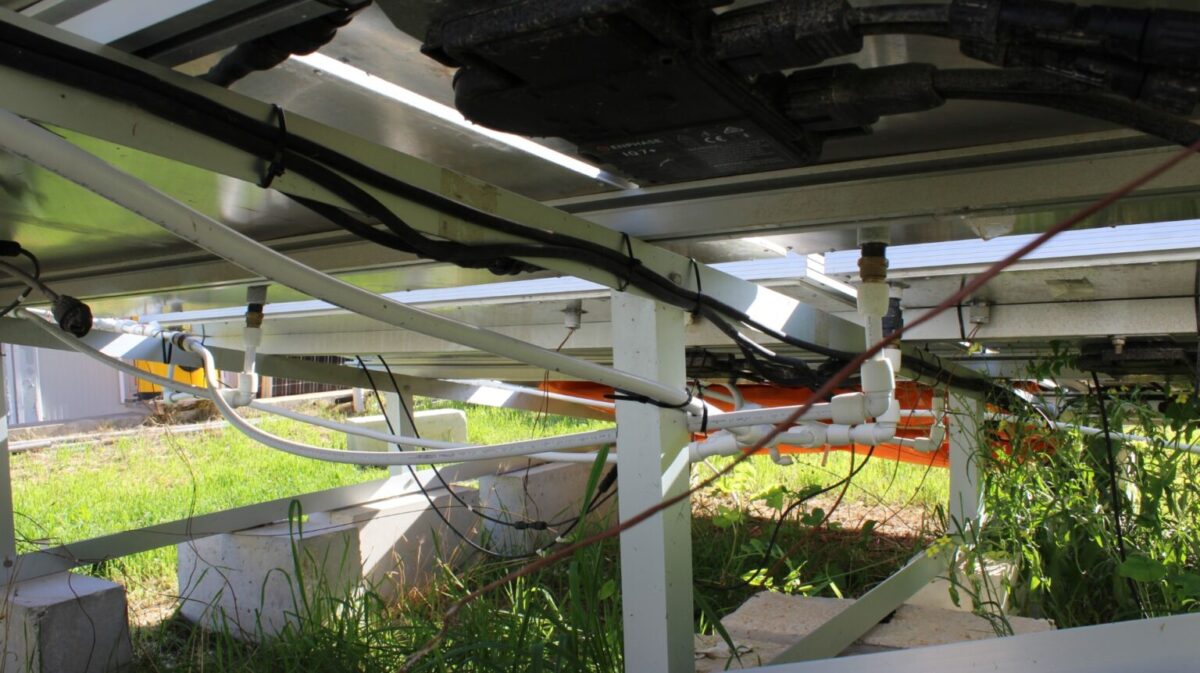A group of scientists at the University of Malta has developed an after-market photovoltaic module cooling system that utilizes a water chamber that can be placed into a gap at the back of standard modules.
“The Innovative Photovoltaic Cooling System (IPCoSy) has already been patented,” the research’s corresponding author, Luciano Mulè Stagno, told pv magazine. “This invention can be advantageous for offshore or floating photovoltaic installations, due to unlimited water resources, and can also benefit both residential and industrial sectors, which aim to install photovoltaic modules and operate them at an increased efficiency.”
The system consists of a bottom plate that is hermetically attached to the frame base ledges of a solar module to create a water chamber directly underneath the backside of the panel itself. “This water chamber is defined by the backsheet of the PV module, the frame wall and the bottom plate,” the scientists explained. “Examples of materials suitable for the bottom plate include but are not limited to, aluminum, stainless steel, polyethylene terephthalate (PET), polypropylene and polyimide.”
The water chamber includes a water inlet and a water outlet arranged at the opposite sites of the frame wall. A temperature sensor is attached to the backsheet of the PV module and is electrically connected to an external junction box. All these components are sealed using a waterproof material.
The system comprises a stream spreader that is hydraulically linked to the inlet on the inner surface of the frame wall. “This stream spreader is configured to provide a uniform fluid dynamic within the water chamber with the aim of pushing out the hot water with as little mixing as possible,” the group said. “The construction of the stream spreader involves an assembly of a T-elbow joint connected to the water inlet at one end and two 45-degree elbow joints connected to two other ends of the T-elbow joint, correspondingly.”
The proposed solution also includes a pipe adapter that is hydraulically coupled to the water outlet on the outer surface of the frame wall and is intended to enable an easy installation of the panel. “The pipe adapter can be rotated so that the water in the chamber is in complete contact with the back sheet of the PV module independent from the installation angle, ensuring maximum heat transfer,” the academics stated, noting that water is pumped to the cooling system via a water pump that can use either seawater or water from a tank.
According to the research group, the proposed system can provide a net electrical energy gain of more than 9 % and thermal efficiencies of up to 56%. ”
“The modified PV module incorporating the cooling system costs 9.7% more than current standard PV modules,” Mulè Stagno explained. “A PV system including the after-market cooling design in its current state will cost double the price of the current standard PV modules. However, these prices were calculated on ‘one-off’ prototypes and hence mass production is expected to decrease costs considerably. Also, when considering thermal efficiencies due to the heating of water and not only electrical efficiencies due to the PV cooling, these prices already make sense.”
The new cooling tech was introduced in the study “Innovative Photovoltaic Cooling System,” published in Innovation Disclosure. “This invention excels even more in areas where a water flow is already present for other processes, such as reverse osmosis plants,” the scientists emphasized. “In such plants, the IPCoSy modules will supply electrical energy from a renewable source while using the existing water flow to increase the operational efficiency
This content is protected by copyright and may not be reused. If you want to cooperate with us and would like to reuse some of our content, please contact: editors@pv-magazine.com.









By submitting this form you agree to pv magazine using your data for the purposes of publishing your comment.
Your personal data will only be disclosed or otherwise transmitted to third parties for the purposes of spam filtering or if this is necessary for technical maintenance of the website. Any other transfer to third parties will not take place unless this is justified on the basis of applicable data protection regulations or if pv magazine is legally obliged to do so.
You may revoke this consent at any time with effect for the future, in which case your personal data will be deleted immediately. Otherwise, your data will be deleted if pv magazine has processed your request or the purpose of data storage is fulfilled.
Further information on data privacy can be found in our Data Protection Policy.